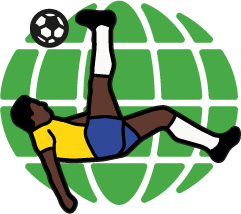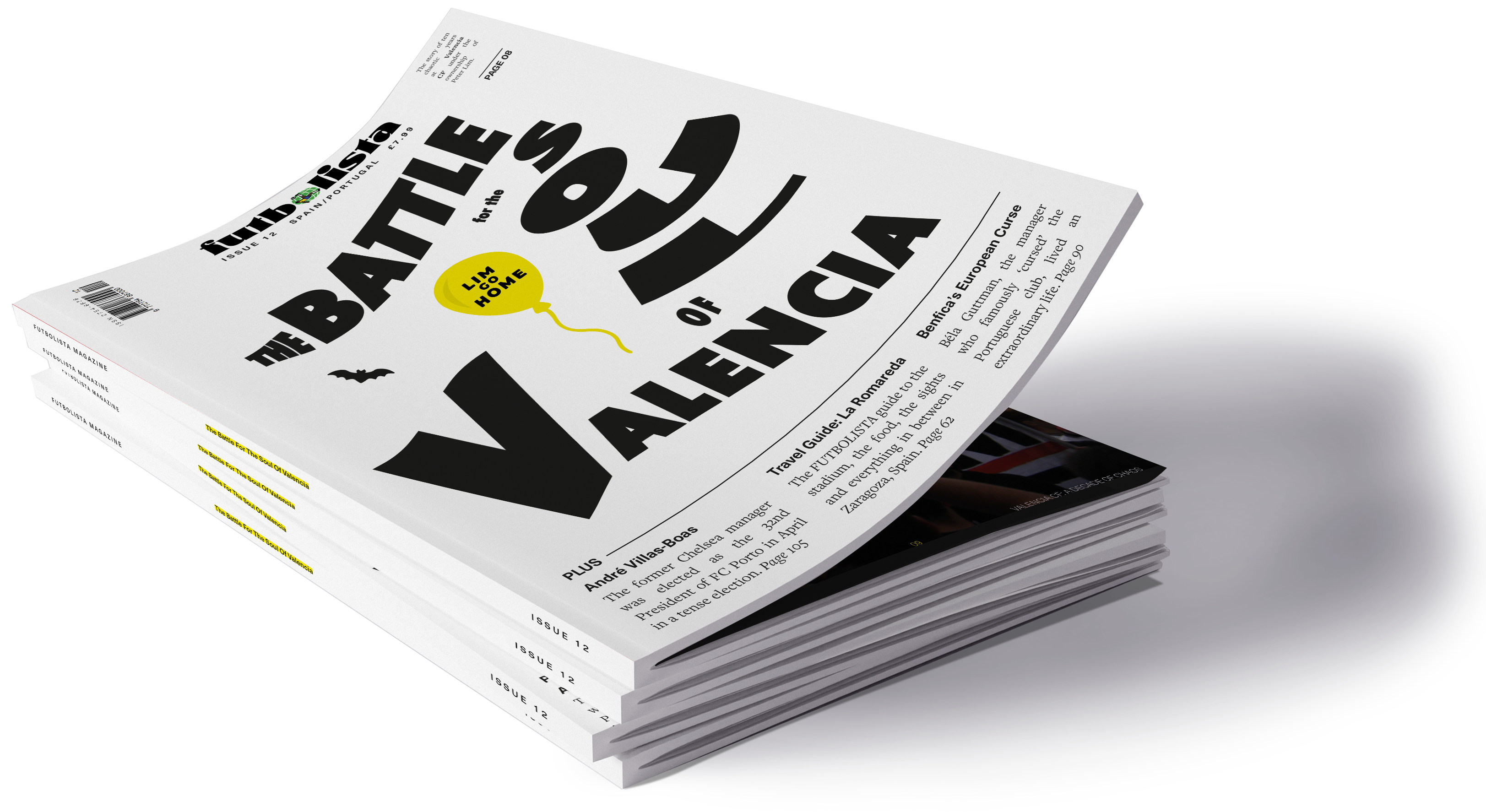BUENOS AIRES, ARGENTINA — The first thing you notice is the shirts. You see them as you walk down the street and realise every other porteño owns a piece of football memorabilia. You spot the second-hand and counterfeit strips hanging in market stalls across the city. You even dine surrounded by them if you go to the famous La Brigada steakhouse in San Telmo, where framed kits from around the world cover the walls.

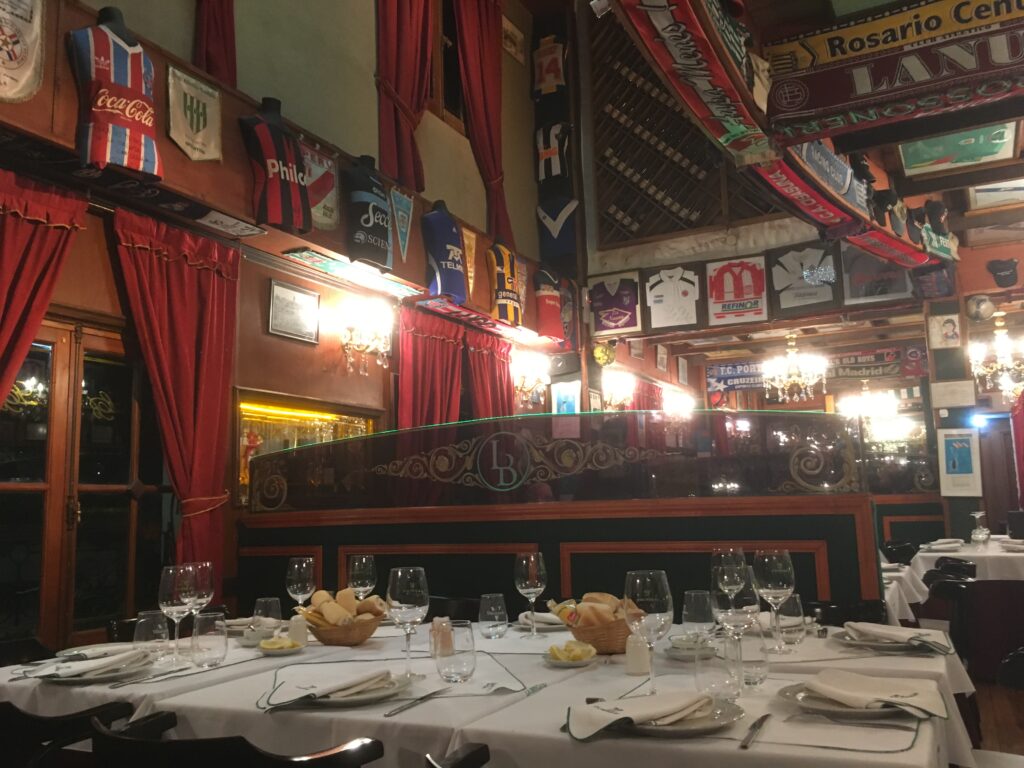
If you’re lucky enough to go to a game, everybody wears their team’s colours to the stadium. There’s Boca Juniors’ famous blue and yellow shirt, taken from the flag of a Swedish ship, and River Plate’s iconic red sash on white, supposedly inspired by carnival decorations – but those are just the big two. There’s Racing Club’s blue and white stripes, fierce rivals Independiente’s vibrant red which gives them their ‘Rojo’ nickname, and San Lorenzo’s bold blue and crimson.
Football is inescapable in Buenos Aires. Argentina’s capital and its suburbs are home to over 20 professional clubs, each with its own ardent fanbase. Passions can run dangerously high – in 2013 the Argentinian FA banned away fans from stadiums after the death of a Lanús supporter at Estudiantes.
But there is plenty to love about Argentina’s obsession with the game, not least the appetite for everything which surrounds football. In a league which loses its young stars early and has to make do with those who are not quite good enough for Europe, it is no surprise that Argentinians take such a keen interest in much more than the 22 players on the pitch. That includes the history, the stadiums, and, above all, the shirts.
“The shirt is really important because it represents a neighbourhood, a history,” says lifelong Boca fan Nacho Lucero. “Boca’s shirt represents my family, my old man, it means a lot.”
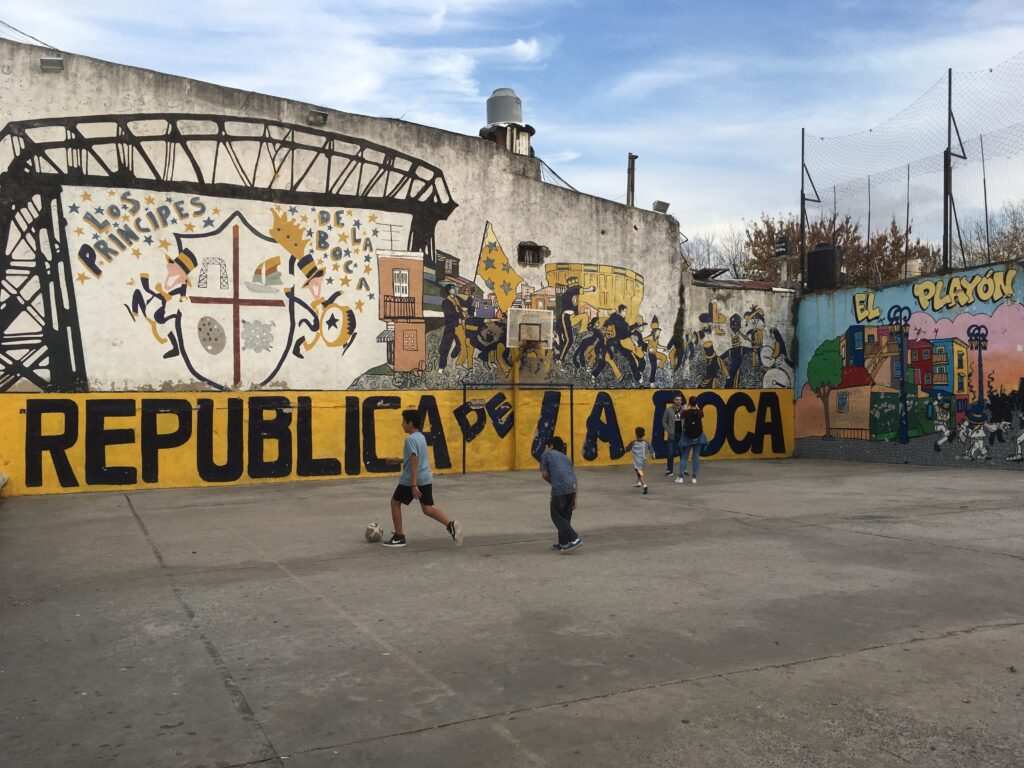
“People take it as a way of life,” adds River season ticket holder Tomás Walter. “You breathe football all the time. If you walk down the street and pay attention you’ll notice lots of people talking about football in shops, restaurants, everywhere. It’s a footballing country and that’s shown by people buying shirts.”
Nobody has benefitted more from that national condition than Lorenzo Barrios. Fondly known as Lito by his customers, he has sold second-hand football shirts at San Telmo’s covered market for over 15 years. Every Sunday, hoarders rifle through the metal racks outside his stall in search of a hidden gem while Lito explains the story behind each shirt.

He puts the popularity of vintage shirts down to the city’s unique football culture. “I think it’s because there’s a lot of fanaticism here,” he tells me in his cramped stall, surrounded by the boots, jackets and handbags which he also sells. “It’s been in fashion for a few years now. That came about 10 years ago, maybe more.”
Classic shirts allow fans to identify with their parents and grandparents’ football memories. The 1986 World Cup triumph is inseparable from the Albiceleste shirt in which Diego Maradona lifted the Jules Rimet trophy – a jersey which sells for as much as £450 on the Classic Football Shirts website. The national team’s mixed fortunes since that tournament might explain why shirts from the 1980s fly off the rails fastest according to Lito. “Before, we were first in everything, we wanted to be first,” he says. “And now, we’re not. But that’s good because Argentinians always think they’re better and they’re not. They think it.”

The nostalgia effect extends to club level, too. Tomás lists River’s 1986 home shirt as his favourite, a close second behind the one in which they won the Copa Libertadores final to end all finals against Boca. “It reminds me of everything my dad told me,” he says. “What River were like before I was born and how they won the first Copa Libertadores and Intercontinental Cup in ‘86. It doesn’t have the traditional badge – it has a lion, the same red sash as always and an Adidas Originals logo, not like now.”
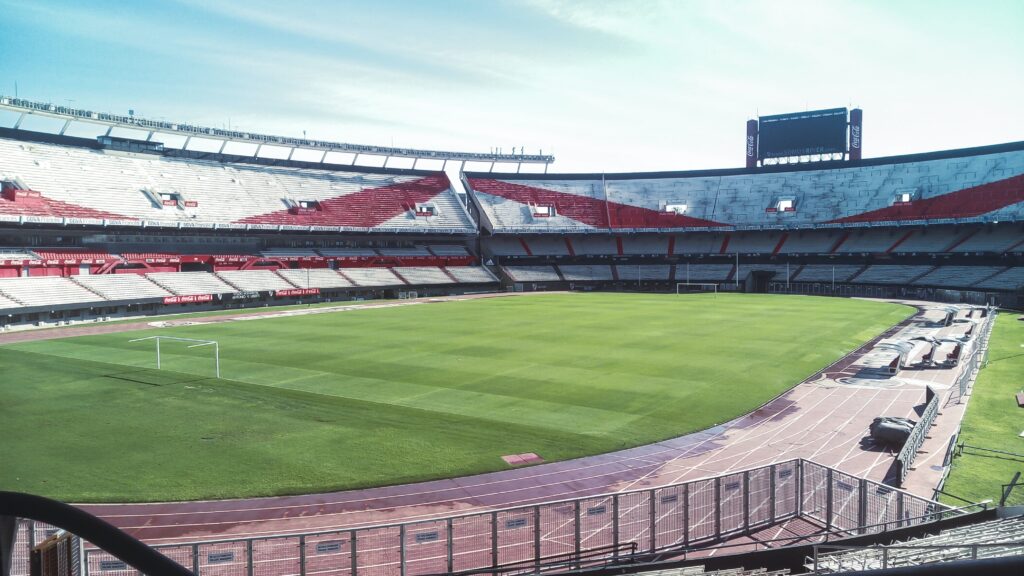
Last year Boca Juniors cut ties with Nike and signed a 10-year shirt deal with Adidas worth $100million. Fans queued outside stores in Buenos Aires when the new shirts were released earlier this year, the away strip taking inspiration from Adidas’ legendary 1989 design which takes pride of place in Boca’s museum. The promotional video cuts between images of the colourful La Boca neighbourhood and players such as captain Carlos Tevez and Daniele de Rossi with the slogan “There’s only one way to live: Boca’s way.”
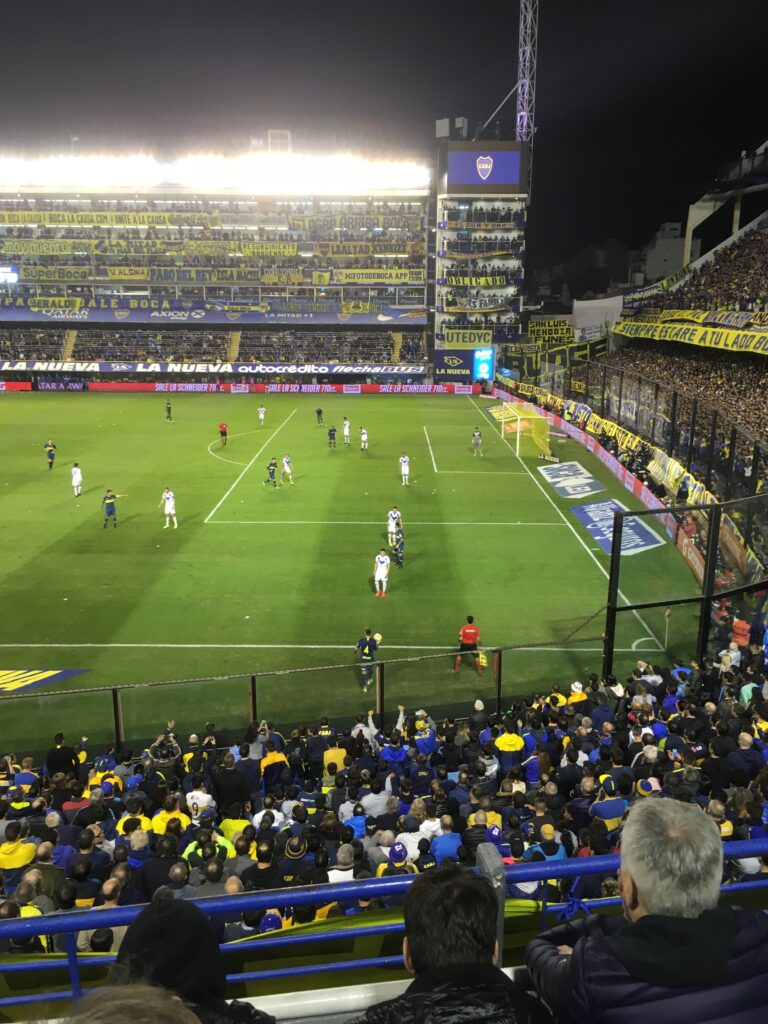
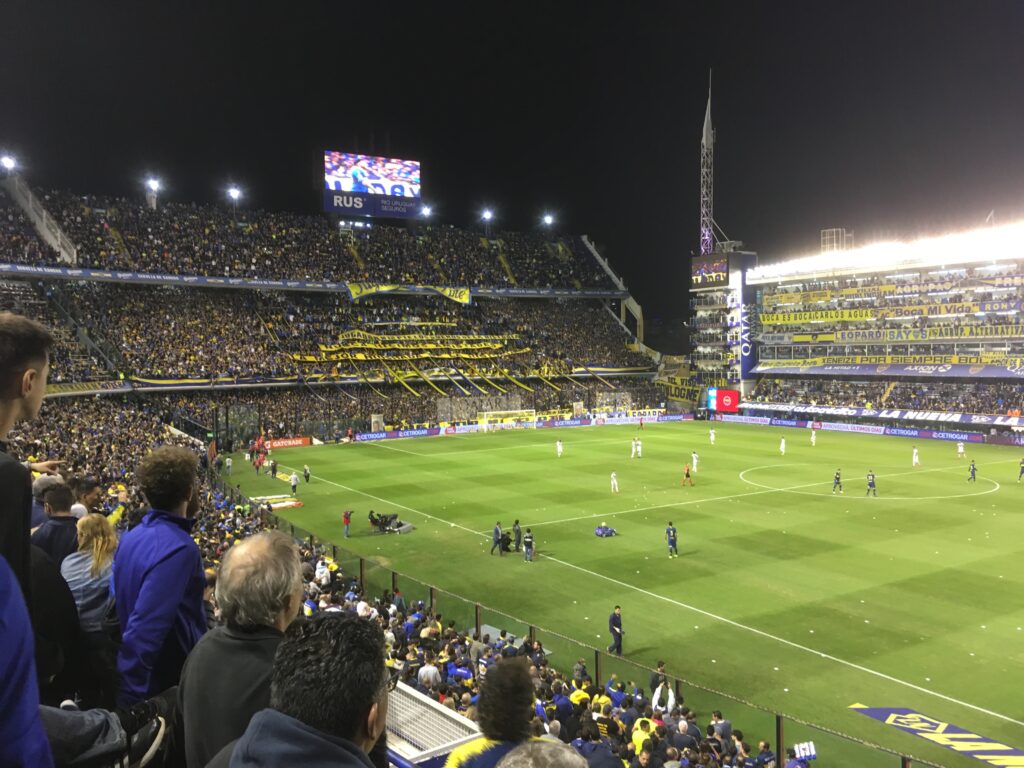
Fans of the countless other teams in Buenos Aires would disagree. As Nacho explains, the shirts help give each barrio its distinct identity. “If you go to Parque Patricios, you find people wearing Huracán shirts; if you go to La Boca, people with Boca shirts; if you go to Nuñez, people with River shirts,” he says. “But there are also places where you can’t wear a certain team’s shirt – if I go to River’s neighbourhood wearing a Boca shirt, I risk people insulting me.”

There is a more serious economic reality behind the second-hand shirts craze. The football outlet Doble Amarilla recently reported that Boca, River and San Lorenzo’s current shirts were worth half the monthly minimum wage in Argentina. Only three teams in the top flight had a shirt on sale at an affordable price for the average supporter. That is only likely to get worse, with Argentina’s already precarious economy predicted to shrink by 12 percent this year due to the pandemic.
Lito started selling shirts in the aftermath of the 2001 economic crisis when his business folded, and these days he says much of his stock is brought in by cartoneros – the litter pickers and recyclers who flooded onto the streets of the capital following the crash. He has capitalised on the fact that taxes make clothes shopping expensive in Argentina and sells most of his jerseys for far less than their modern equivalents. “When there’s more hardship, it works in my favour,” he admits in a hushed voice.
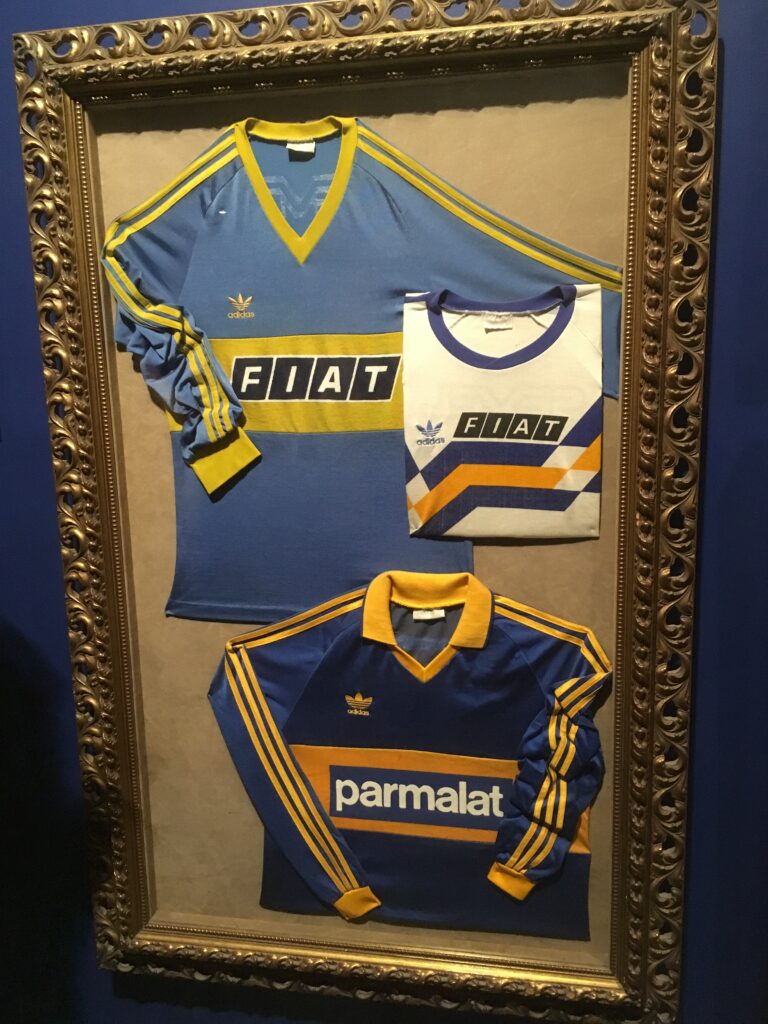
But ultimately the shirts are just another sign of a city that lives football like no other. Lito himself is a Boca fan and has to stop himself getting carried away with it all. His holy grail is the 1983 Adidas home shirt sponsored by Vinos Maravilla – the first of its kind for the club – which he has seen once in his 15 years running the stall.
“I love it,” he says of his job. “But I don’t want to get too attached to the shirts because otherwise you suffer if you have to sell them each time. So I treat it as a business and nothing more – I had to get that into my head.”
